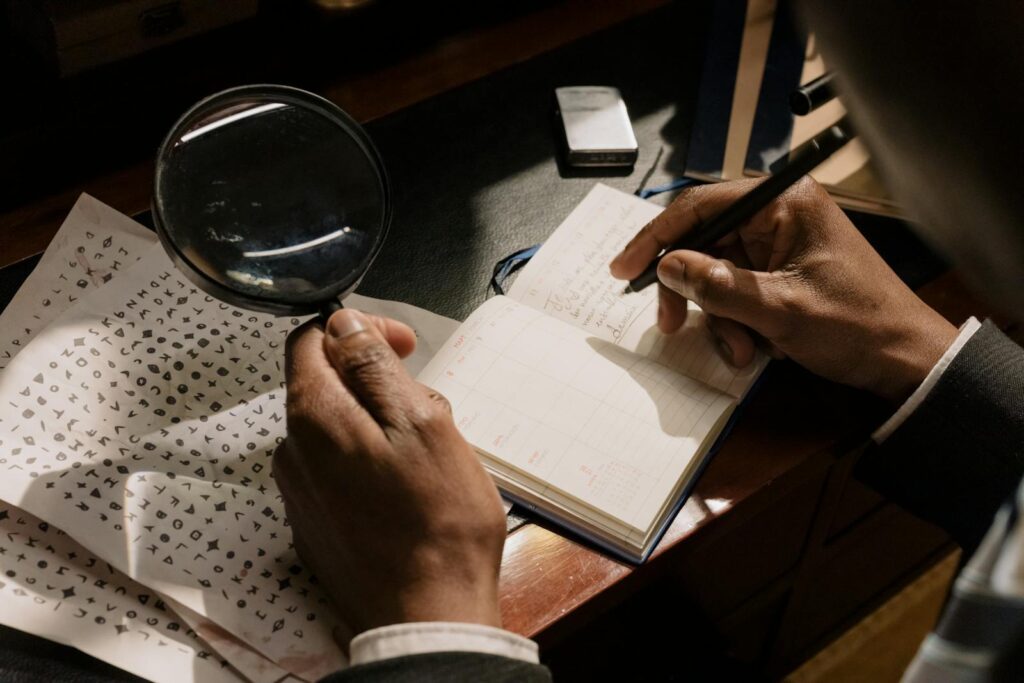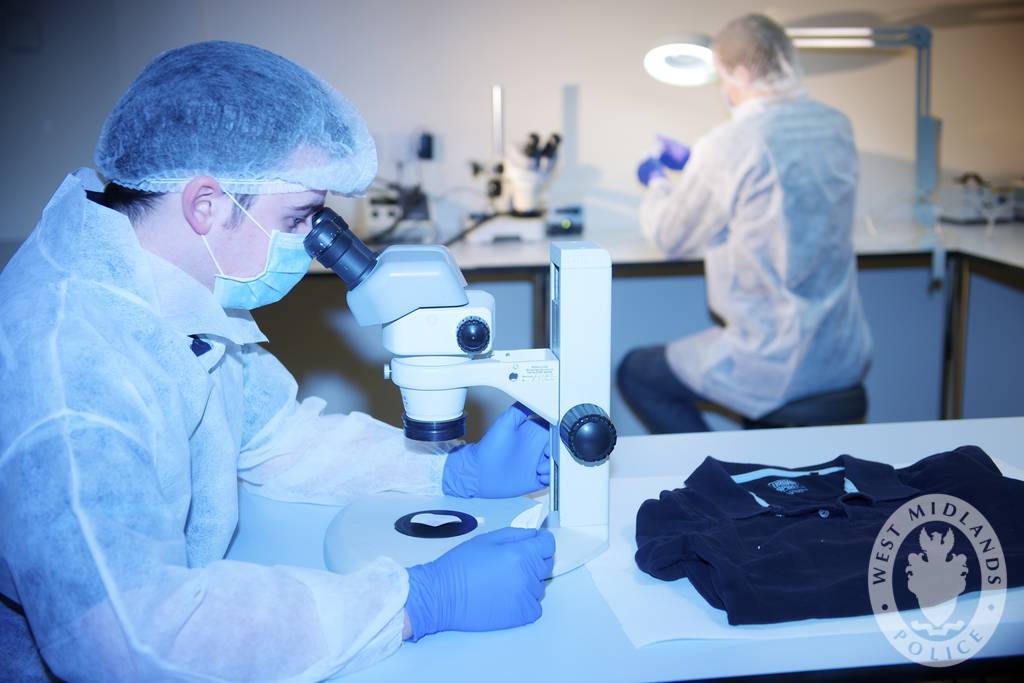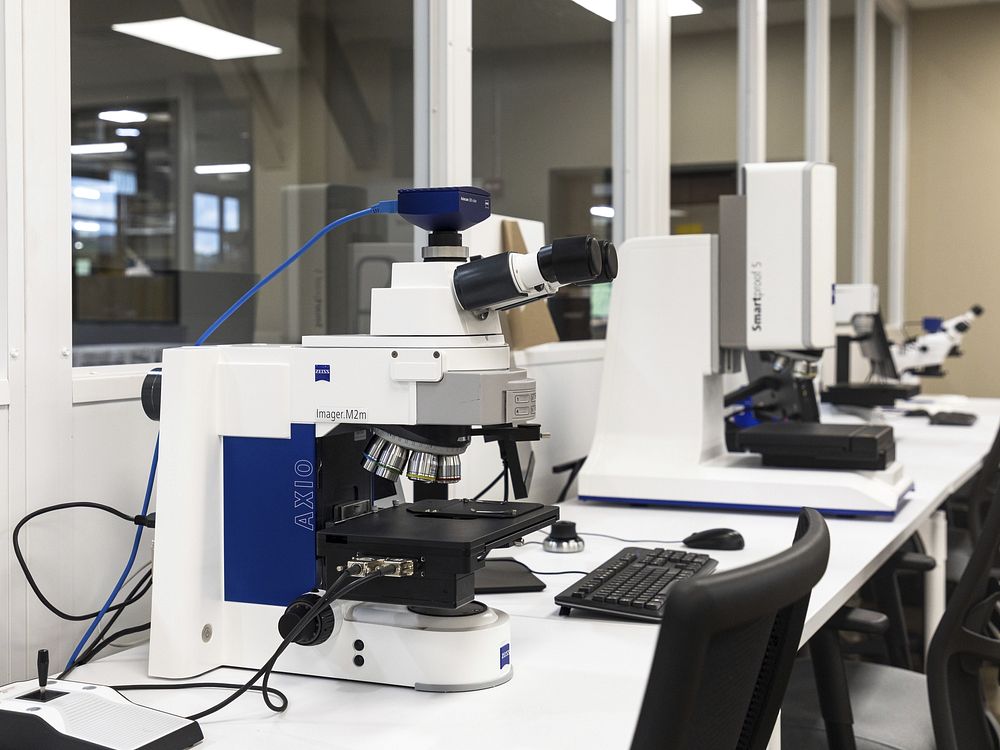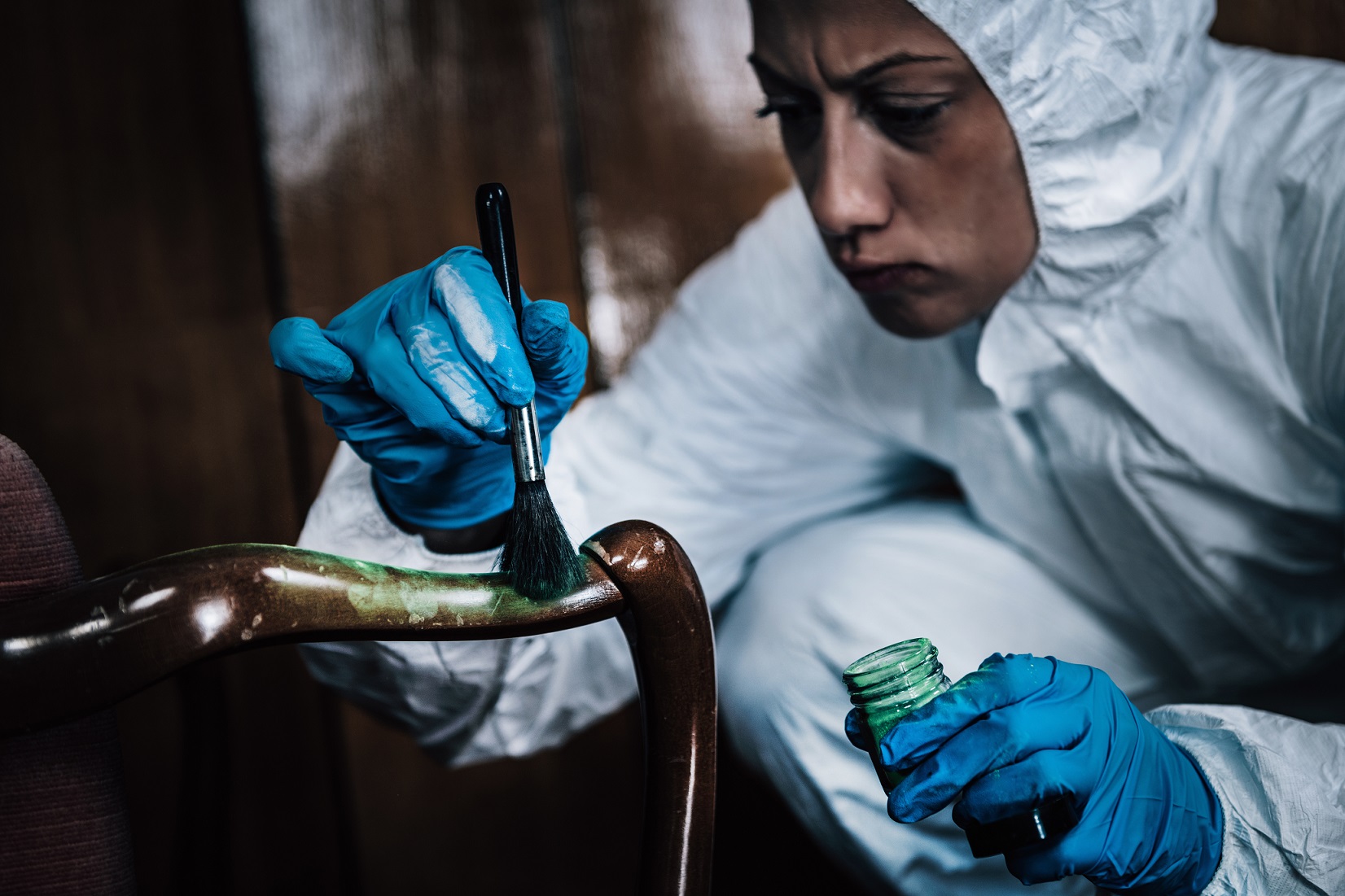Now Reading: Forensic potential of Atomic Force Microscopy
-
01
Forensic potential of Atomic Force Microscopy
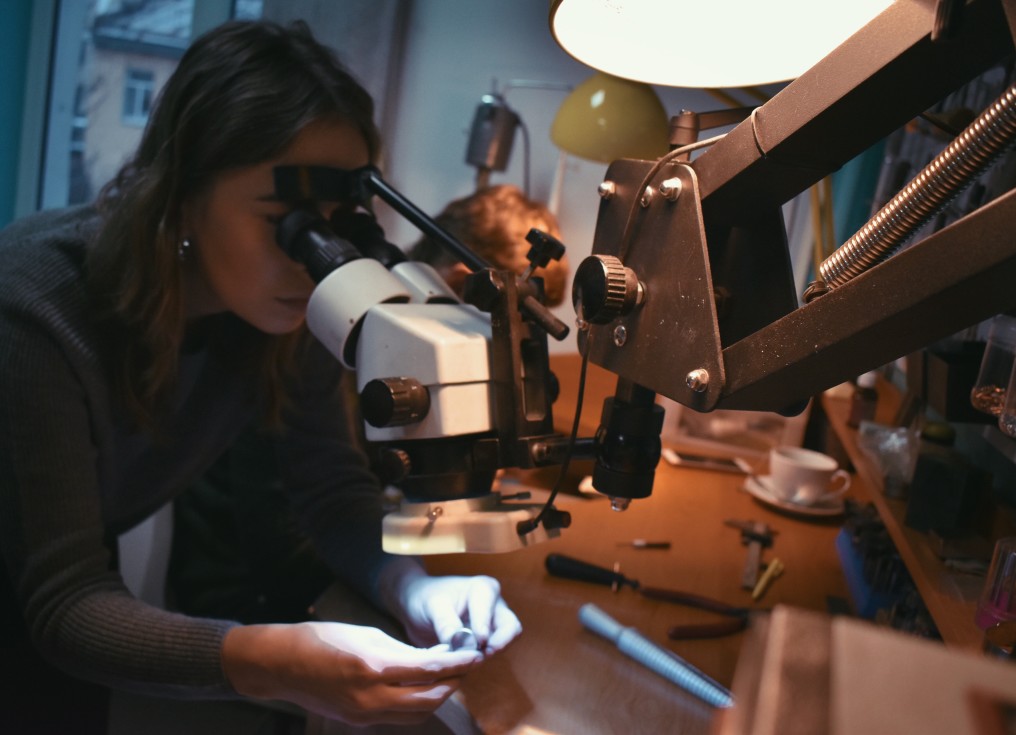
Forensic potential of Atomic Force Microscopy
ABSTRACT
The article basically deals with the forensic potential of atomic force microscopy and its principles. The atomic force microscope (AFM) is used for examination of forensic evidence examination and has found many applications in biological sciences. The AFM can be used to image the structure of soft biological materials in their inherent environments. AFM is used for various divisions in the forensic fields such as age estimation of bloodstains, imaging human hair, document forgery, gunshot distancing explosive residue examinations, and morphological structure of diatoms are discussed.
Keywords: Examination, Forensic biology, document forgery, bloodstain estimation, Explosives examination, Forensic Science, Surface Morphology, 3D imaging
INTRODUCTION
Forensic Science is a wide field with several subdivisions and uses different techniques that find its roots of guilty and other lawful evidence. Physical evidence plays a vital role in crime scene investigation. Physical evidence has legal recognition, it can play an excessive role to determine the modus operandi (a manner of operating) in a case where direct or circumstantial evidence are absent and for the administration of criminal justice. Examination of these evidence are highly crucial and precise. Identification and characterization of forensic evidences like a fingerprint, textile fiber, and document forgery examinations, and the atomic force microscopy (AFM) imaging technique has its significance. The atomic force microscopy (AFM) combines unparalleled non-destructive imaging proficiencies with flexibility allowing many types of samples to be imaged in various environments. The AFM has numerous leads over electron microscopy in the study of biological material evidences, including the facility to image in liquid with negligible sample preparation. In assessment with other optical microscopy, in the area of identifying surface on Nano‐scale, AFM determines several advantages such as its non‐destructive nature and its capability to produce high-resolution images and detect different properties of a sample. Atomic force microscopy is a type of scanning probe microscopy (SPM), with verifies the resolution on the order of fractions of a nanometer, more than 1000 times better than the optical diffraction edge. The major characteristics of AFM are force measurement, topographic imaging, and manipulation. In force measurement, AFMs can be used to determine the forces between the probe and the sample as a function of their mutual separation. In imaging, it is used to formulate an image of the three-dimensional shape of a sample surface at a high resolution. In manipulation, the forces between point and sample can also be used to change the properties of the sample in a supervised way. When it comes to forensic science, Atomic Force Microscopy helps in the examination of physical and biological evidences.
PRINCIPLES OF ATOMIC FORCE MICROSCOPY
Atomic Force Microscopy has several modes including contact mode and non-contact mode, which can be used for succeeding different drives depending on the samples’ function and concluding purposes. Atomic Force Microscopic analysis is an acute step for disclosing the essentials of macromolecules and the parallel properties and applications. AFM microscopes are based on a distinctive non-optical surface interrogation technique. The principle of AFM microscopes is that surface detecting using an extremely sharp tip on a micromachined silicon probe. The tip of the AFM is used for imaging a sample by raster scanning across the surface line by line, also the method differs dramatically between distinct operating modes.
POTENTIAL APPLICATION OF ATOMIC FORCE MICROSCOPY IN FORENSIC INVESTIGATION
Forensic documentation: Document forgery
Document forgery implicates the illegal imitation or alteration of an existing document or content. Atomic force microscopy (AFM) as a Nano-indentation method helps in the identification toner and stamping ink forgeries on the surface of documents. The sequential order of the application of the toner and stamping ink can be identified, irrespective of the types of toners made by any companies. Using AFM, measured the modified surface of toner particles in different ways as well as the adhesion of the toner particles. Also, using AFM, recognized the surface info on the intersections of the printer ribbon and the ballpoint pen ink in documents to determine the sequential order of the printing. The main feature of this method is that, the samples can be examined without destructive them, but this method makes it challenging to measure when the surface of ink applied is damaged.
Forensic Biology: Hair analysis and age estimation of bloodstain
The hair is an important physical evidence which contain the accumulations of compounds like drugs, chemicals, and biological. The main characteristic of hair is that its basic composition doesn’t varies according to the external environs. AFM is considered as an admirable instrument for hair analysis as it is of high resolution and its capability to operate in air, liquid, or vacuum. It helps in determining the properties of hair that varies with environment, national origin, chemical and physical treatments, and identification or information of an accused in a crime by analysis of function such as the strength of hair.
Estimation of the time of bloodstain helps in determining the time of crime occurred. The age of bloodstain is determined by the examination of enzyme activity, color changes in blood, the solubility of bloodstains, chloride transfer, RNA degradation, etc. AFM has been used to examine the nanostructure of membranes of RBC, determine the alteration in membrane and its cause.
Forensic Ballistics and Explosives
Forensic ballistics is the analysis of evidence connecting to firearms at a crime scene, including the properties and activities of projectiles and explosive devices. In ballistics, Atomic Force Microscopy is used for the analysis of the physical properties of firearms and ammunitions [4]. In case of fire accidents, AFM is used to examine the molten mark of copper wire. This helps in the confirmation of the cause of the fire in the crime scene. Similarly, AFM is used to detect explosives. Surface morphology of explosives such as triamino- trinitro-benzene, ammonium perchlorate, and PBXs have been analyzed with help of AFM Examination of the gunshot residue is another important analysis in forensic ballistics. Using AFM, it is said that the distance of firing can be determined by analyzing Gunshot residue.
Forensic Botany: Analysis of diatom
Diatoms are single-celled algae with cell walls composed of transparent, opaline silica. Forensic relevance of the diatom comes in drowning cases. AFM is used in the examination of the morphological characteristics of diatoms which gives the origin of location, its developmental cycle that can probably redirect its forensic application. It has the capability to determine the 3 Dimensional surface topology of the hard material without coatings. This facility of AFM helps in reviewing the bio-mineral formation in diatoms.
CONCLUSION
Nano-forensics carries a new period of forensic investigation in which prompt results can be produced that determine various evidence such as explosive gasses, biological agents, and residues of a firearm in different crime scenes and explosives in terrorist activity investigations. Atomic Force Microscopy is a tremendous representative instrument for the 3-dimensional imagining and surface representation of physical, chemical, and biological materials at a Nanoscale level. This article is mainly focused on the potentiality of Atomic Force Microscopy in forensic science. It has been used in various branches of forensic science such as Ballistics, Forensic botany, Forensic Biology, etc. Thus, AFM is a potential implement to investigate, distinguish and examine the evidence at a Nanoscale level for assisting the forensic investigations.
REFERENCES
[1] A. Fiori, Detection and Identification of Bloodstains: Methods of Forensic Science,vol. 1,Interscience, New York, London, 1962, 243–249
[2] A. Kumari, Mehilal, S. Jain, M.K. Jain, B. Bhattacharya, Nano-Ammonium Perchlorate:Preparation, Characterization, and Evaluation in Composite Propellant Formulation, J.Energetic Mater. 31 (2013) 192-202.
[3] A.E.D.M. Van der Heijden, Y.L.M. Creyghton, E. Marino, R.H.B. Bouma, G.J.H.G.Scholtes, Energetic materials: Crystallization, characterization and insensitive plastic bonded explosives, Propellants Explos. Pyrotech. 33 (2008) 25-3
[4] F. Valle, M. Bianchi, S. Tortorella, G. Pierini, F. Biscarini, M. D’Elia, Nanotechnology for forensic sciences: Analysis of PDMS replica of the case head of spent cartridges by optical microscopy, SEM and AFM for the ballistic identification of individual characteristic features of firearms, Forensic Sci. Int. 222(2012) 288-297
[5] G.C. Yang, F. Nie, H. Huang, L. Zhao, Pang Preparation and characterization of nano-TATB explosive, Propellants Explos. Pyrotech. 31 (2006) 390-394.
[6] I.P. Seshadri, B. Bhushan, Effect of ethnicity and treatments on in situ tensile response and morphological changes of human hair characterized by atomic force microscopy, Acta. Materialia. 56 (2008) 3585–3597.
[7] Julie A. Last, Paul Russell, Paul F. Nealey, and Christopher J. Murphy (2010). The Applications of Atomic Force Microscopy to Vision Science. DOI:10.1167/iovs.10-5470
[8] Kang, T.-Y., Lee, J., & Park, B.-W. (2016). Use of atomic force microscopy in the forensic application of chronological order of toners and stamping inks in questioned documents. Forensic Science International, 261, 26–32. doi:10.1016/j.forsciint.2016.01.033
[9] Konopinski, DI; (2013) Forensic applications of atomic force microscopy.
[10] M. Hildebrand, M.J. Doktycz, D.P. Allison, Application of AFM in understanding biomineral formation in diatoms, Pflugers Arch – Eur. J. Physiol. 456 (2008) 127–137.
[11] M. Tourné, Developments in Explosives Characterization and Detection, J Forensic Res. S12 (2013) 002.doi: 10.4172/2157-7145.S12-002.
[12] Mary L.Ott, Howard A, .Mizes. (2001). Atomic force microscopy adhesion measurements of surface-modified toners for xerographic applications https://doi.org/10.1016/0927-7757(94)80072-3
[13] Pandey, G., Tharmavaram, M., Rawtani, D., Kumar, S., & Agrawal, Y. (2017). Multifarious applications of atomic force microscopy in forensic science investigations. Forensic Science International, 273, 53–63. doi:10.1016/j.forsciint.2017.01.030
[14] S Kasasa, A Khanmy-Vitalb, G Dietlerc (2001).Examination of line crossings by atomic force microscopy https://doi.org/10.1016/S0379-0738(00)00458-8
[15] Syuan‐Zhen Chen, Tung‐Lin Tsai, Yung‐Fou Chen (2012). Forensic Application of Atomic Force Microscopy ― Questioned Document https://doi.org/10.1002/jccs.201100739
[16] Threes Smijs and Federica Galli (November 5th 2018). Forensic Potential of Atomic Force Microscopy with Special Focus on Age Determination of Bloodstains, Atomic-force Microscopy and Its Applications, Tomasz Tański, Marcin Staszuk and Bogusław Ziębowicz, IntechOpen, DOI: 10.5772/intechopen.77204. Available from: https://www.intechopen.com/books/atomic-force-microscopy-and-its-applications/forensic-potential-of-atomic-force-microscopy-with-special-focus-on-age-determination-of-bloodstains
[17] Yang, Hongshun. (2014). Atomic Force Microscopy (AFM): Principles, Modes of Operation and Limitations.


